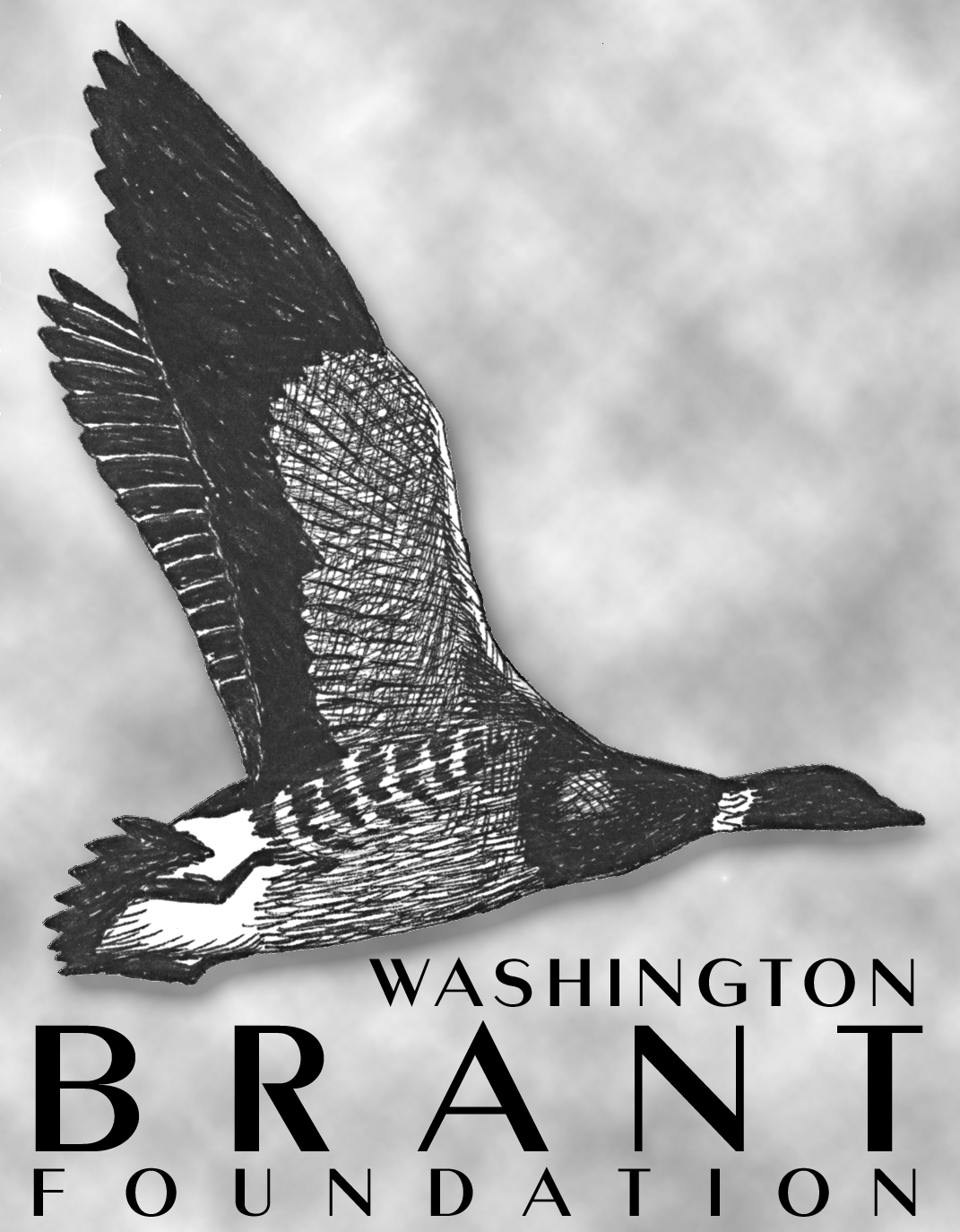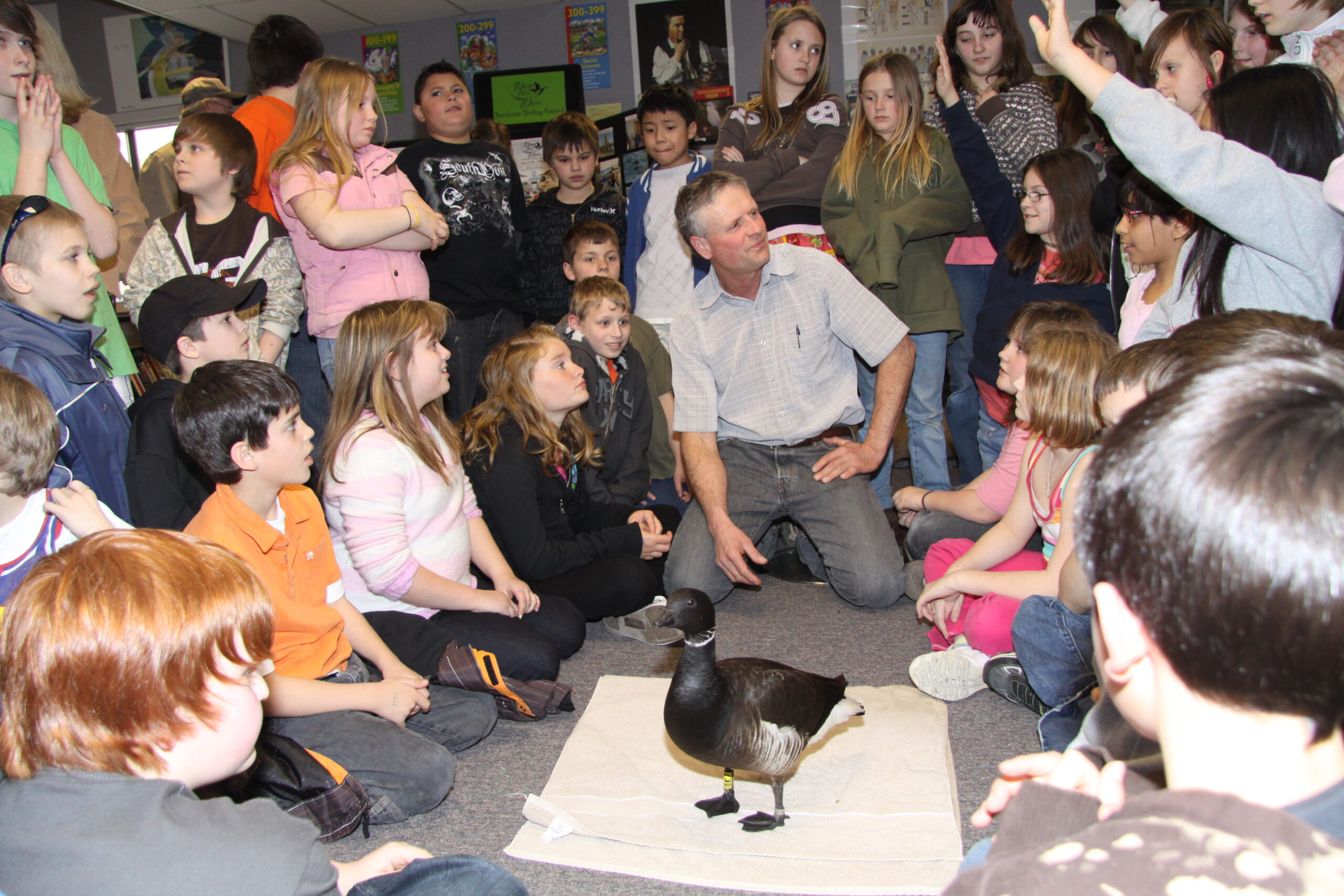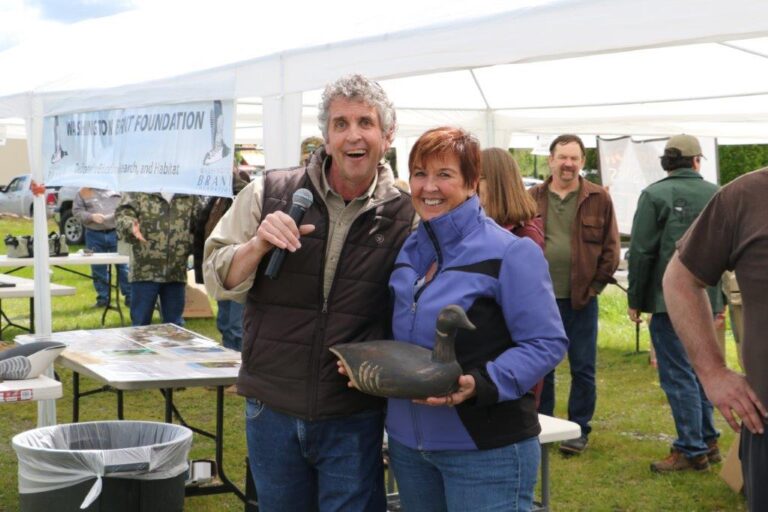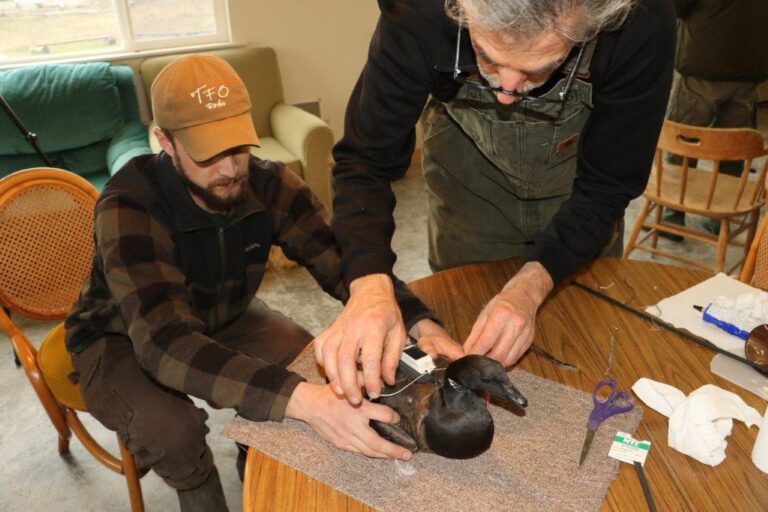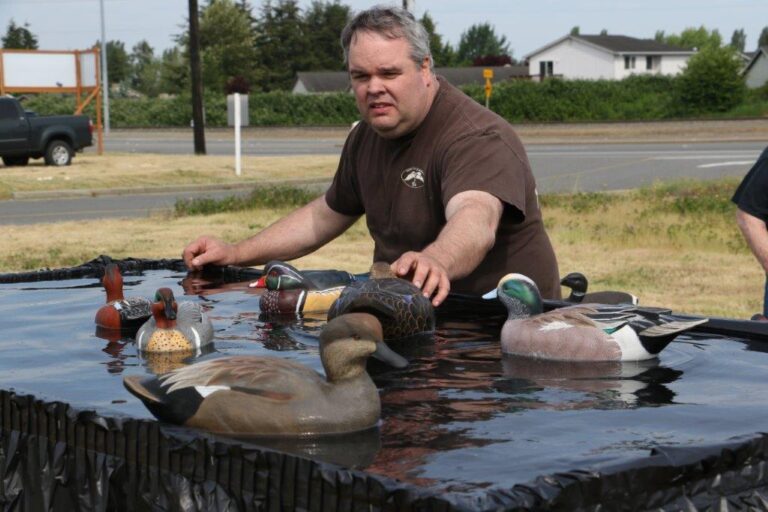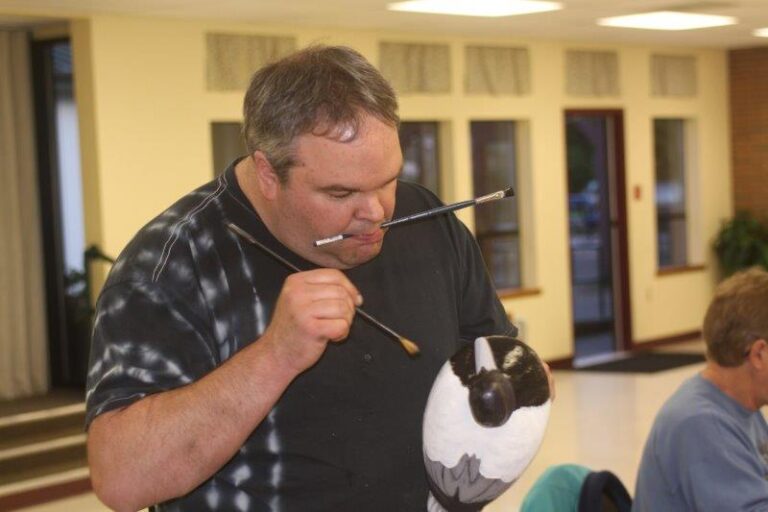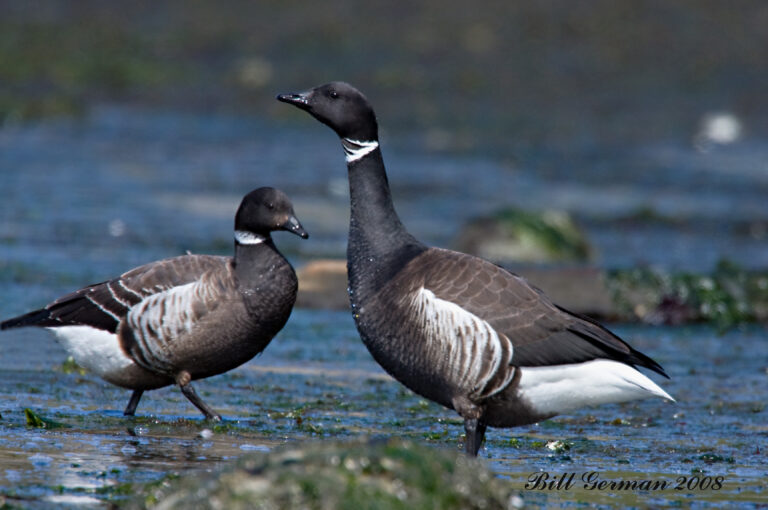About the Washington Brant Foundation
Welcome! The Washington Brant Foundation hopes this visit to our web site will increase your understanding and appreciation of this unique wildlife species and how to protect and preserve its habitat.
The Black Brant (Branta bernicla nigricans) is a small sea goose that is about the size of the common Mallard and is known for several unique characteristics. These include – steadfast fidelity to specific habitat and food sources, important part of Native culture, spectacular migration, and strong social structure.
They depend heavily on one major food source – eel grass which only grows in certain estuaries. Their eggs, meat, and down have been a prominent part of survival for Arctic Native communities. Lack of size has fostered a strong social network that includes colony nesting for better survival. And their complex migrations have been the subject of extensive research.
Arctic nesting Brant from Alaska, Canada, and Russia gather at Izembek National Wildlife Refuge on the Alaska Peninsula in August and September. This World Heritage Site supports hundreds of thousands of fall staging waterfowl until most leave in November. Some Brant make an epic journey, flying almost non-stop to wintering areas in Baja, Mexico. Others stop at traditional sites along the Pacific Coast from British Columbia to southern California. In recent times milder winter temperatures have allowed various groups of birds to remain in Alaska all winter, an increasing trend in the last twenty five years.
Spring migration is quite different as birds move north in segments, stopping at historic sites enroute to spring staging at Izembek, before dispersing further north to breeding areas. The largest concentration of Brant here in the Salish Sea of Puget Sound occurs February through April, coinciding with Pacific Herring spawning.
Brant numbers wintering along the Pacific Coast have declined in recent decades, due in part to human development near estuaries and climate change, which seems to be altering migration patterns. Disturbance near feeding and resting areas reduces their ability to conserve energy during migration which directly influences reproductive success. Limited food availability and short Arctic nesting season obligates birds to arrive already in good condition, bringing nutrients required for nesting with them.
You can help by joining the Washington Brant Foundation, to help protect and preserve their habitat through sponsorship of scientific research, education, and habitat enhancement programs.
By hosting conferences, symposiums and meetings, we bring together practitioners from across the UK (and beyond) to share learning, transfer good practice and raise standards. This inspirational venue, with a world-class reputation, is also committed to helping individuals nurture their skills and confidence for independent adventures.
